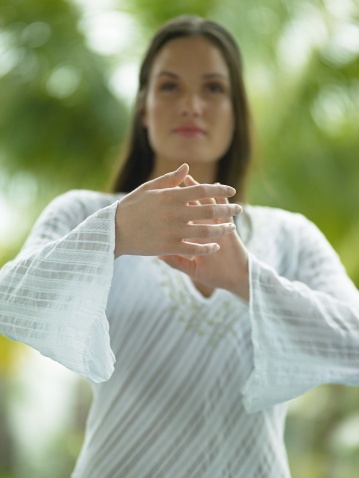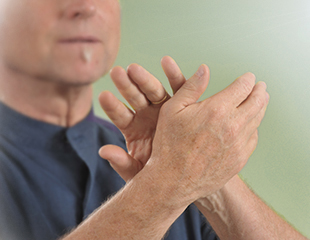 T’ai Chi is…
T’ai Chi is…
a series of 37 gentle, flowing movements that have been practiced as a health exercise since ancient times. Based on natural laws, it teaches relaxation, boosts energy, and erases tension. Performed in a calm, peaceful manner, it can work for all regardless of age.
a moving meditation that teaches relaxation in the midst of activity. Rather than sitting motionless, students learn to stay centered and relaxed while flowing through the series of uninterrupted movements. This aspect of T’ai Chi is particularly practical and applicable for people living in today’s stressful environments.
a health exercise. My approach to teaching T’ai Chi is primarily as a health exercise, as opposed to its martial arts application. People are frequently confronted verbally and emotionally by the pressures of daily living. Learning to stay centered and calm in the normal activities of life reduces tension, increases energy and allows us to develop the skills needed in more acute circumstances. “Sensing Hands,” also known as “Push Hands” or “Tui-shou,” allows further development of these skills, as well as a deeper understanding of the functional application of the T’ai Chi form.
a benefit to all! In my classes students are encouraged to progress at their own rate. In order to build a strong connection to ourselves (being “centered”) students must begin to practice with an awareness of their own limitations. Simply put, we begin where we are. Progress in T’ai Chi has many starting points, but with perseverance anyone can learn and benefit from it.
Align with the Universe: The Five Basic Principles of T’ai Chi
 Relax This principle is the foundation for all the others. By relaxing we want to let the weight of our bodies sink into the ground, developing a “root.” In T’ai Chi we want to use the least amount of effort possible. “Relax,” does not mean “Collapse.” In ridding unnecessary tension from the body, its vitality (chi) is more accessible. “Relax” is achieved through practicing the other four principles.
Relax This principle is the foundation for all the others. By relaxing we want to let the weight of our bodies sink into the ground, developing a “root.” In T’ai Chi we want to use the least amount of effort possible. “Relax,” does not mean “Collapse.” In ridding unnecessary tension from the body, its vitality (chi) is more accessible. “Relax” is achieved through practicing the other four principles.
Body Upright The toll we pay for standing on the earth is the weight of our bodies—the simple result of gravitational pull. The way we can most fully “relax” is to “yield” to the force of gravity by aligning our bodies with it. Another way to describe this principle is “balance.” If the body is in balance, it aligns with gravity—upright and relaxed.
Separate the Weight Also called separate Yin and Yang/full and empty/substantial and insubstantial. Movement in T’ai Chi is a flow of the weight from one leg into the other. For the leg to “fill,” or accept the body’s weight, it must first be “empty,” or non-weight-bearing. Probably the most physically demanding aspect of T’ai Chi, the work of “Separate the Weight” is rewarded by improved balance, leg strength and ease of movement.
Flexible Waist In T’ai Chi this means that turning movements come from the pelvis or hips. We often act as if the body’s “steering wheel” is the chest and shoulders. The result is unnecessary tension in the upper body. In T’ai Chi the chest and shoulders relax so that turning is controlled by the hips. The movement “is rooted in the feet, released through the  legs, controlled by the waist, and manifested through the fingers.” When we relax and turnfrom the hips, the hips and shoulders stay aligned, integrating the upper and lower body in a relaxed, unified movement.
legs, controlled by the waist, and manifested through the fingers.” When we relax and turnfrom the hips, the hips and shoulders stay aligned, integrating the upper and lower body in a relaxed, unified movement.
Fair Lady’s Wrist/Beautiful Lady’s Hand Keeping the wrist straight from the elbow to the tip of the middle finger is the simplest of the five basic principles, but its importance cannot be overstated. The wrist is the first of the “nine gates” in the body to relax and open. The bent wrist acts the same way a kink in a garden hose restricts the flow of water through it. Keeping the wrist straight allows the movement of the legs and waist to manifest in the hands.
